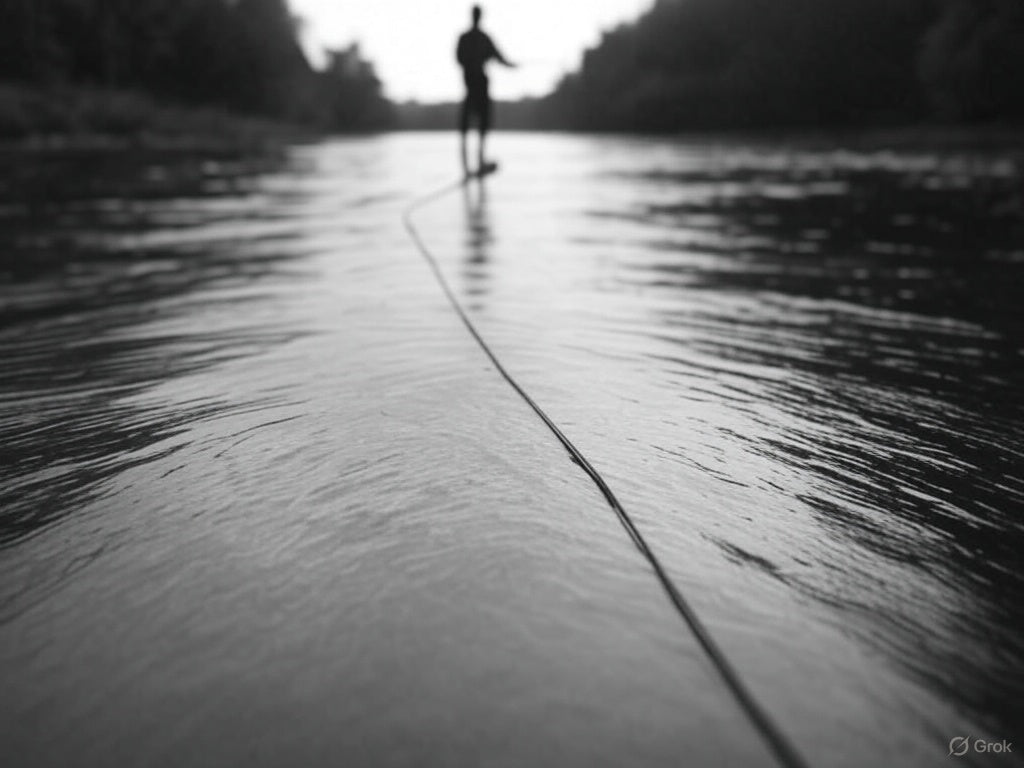
How to Mend a Fly Line in Smooth and Rippled Water: Setup, Weights, and Techniques
Share
Mending a fly line is a crucial skill for fly fishing success, especially in smooth and rippled water where a natural drift can make or break your catch. Whether you’re casting over glassy pools or gentle riffles, mastering how to mend a fly line ensures your fly mimics a free-floating insect or baitfish, enticing trout and other species. This guide covers the best line setup, whether you need a strike indicator, ideal line weights, and proven mending techniques for smooth and rippled water, helping you perfect your drift every time.
Why Mending a Fly Line Matters
Mending adjusts your fly line after it lands to counteract currents, preventing unnatural drag that spooks fish. In smooth water, like calm pools, any drag is obvious, demanding precise mends for a lifelike presentation. Rippled water, with light riffles or waves, hides some imperfections but still requires control to keep your fly in the strike zone. Learning to mend a fly line in these conditions boosts your chances of landing fish, whether you’re nymphing or fishing dries.
Best Line Setup for Mending in Smooth and Rippled Water
A proper line setup is the foundation for effective mending. Here’s how to configure your gear:
-
Leader and Tippet: Use a tapered leader (9-12 feet, 3X-5X) for smooth energy transfer. In smooth water, extend the tippet to 18-24 inches of 5X or 6X fluorocarbon to avoid spooking fish with delicate presentations. For rippled water, a shorter tippet (12-18 inches, 4X-5X) works, as surface disturbance provides cover.
-
Fly Line: A floating weight-forward (WF) line is ideal for both conditions. Its tapered design turns over long leaders easily, making mending a breeze in shallow to medium-depth water (1-6 feet). WF lines also help cast accurately in smooth water’s open spaces.
-
Flies: In smooth water, opt for small dry flies (size 16-20, e.g., Parachute Adams) or unweighted nymphs (size 14-18, e.g., Pheasant Tail) for subtle presentations. In rippled water, try larger dries (size 12-16, e.g., Elk Hair Caddis) or weighted nymphs (size 12-16, e.g., Beadhead Hare’s Ear) to match the environment’s energy.
This setup ensures your line is ready for precise mends, whether you’re fishing a glassy pool or a riffled run.
Do You Need a Strike Indicator for Mending?
Strike indicators help detect bites, but their use depends on water conditions and fishing style. Here’s when to use one:
-
Smooth Water: Indicators can be tricky in clear, calm pools. A foam indicator (e.g., Thingamabobber) might splash and scare fish. Instead, use a yarn indicator (e.g., New Zealand Strike Indicator) for its soft landing, set at 1.5 times the water depth (e.g., 4.5 feet for a 3-foot pool). For dry-fly fishing, skip the indicator and watch your fly or line tip for strikes—smooth water makes movement visible.
-
Rippled Water: Indicators are more forgiving here due to surface ripples. A medium foam indicator (½ inch) supports weighted nymphs without sinking, set at 1.5-2 times the water depth. For dry flies, you can often go indicator-free, as ripples mask minor drag.
If you’re new to mending a fly line, indicators can help track your fly’s drift, but experienced anglers may prefer indicator-free setups for cleaner presentations.
Ideal Line Weights for Smooth and Rippled Water
Choosing the right line weight enhances your mending accuracy and casting control. Here’s what works:
-
Smooth Water: A 4-weight line with a 9-10 foot rod is perfect for small to medium streams. Its light touch lands softly, reducing fish-spooking splashes, and it’s easy to mend over long distances. Use it for small trout or panfish in calm pools.
-
Rippled Water: A 5-weight line (or 6-weight for windier days) with a 9-foot rod handles the extra surface turbulence. It supports slightly heavier flies and longer casts, ideal for medium-sized trout in riffled runs.
Pair these lines with rods designed for delicate presentations (medium-action rods work well) to maximize mending control.
Top Mending Techniques for Fly Fishing
Effective mending techniques vary by water type, but these three are essential for smooth and rippled conditions:
-
Upstream Mend: After casting, lift the rod tip and flip the line upstream before it drags. This delays drag in smooth water, keeping your fly drifting naturally. Use short, gentle flips to avoid disturbing the surface.
-
Downstream Mend: In faster rippled water, flip the line downstream to slow your fly’s drift. This works well when fishing across currents, ensuring your nymph stays in the strike zone longer.
-
Stack Mend: For complex currents in rippled water, make multiple small mends in a row, “stacking” loops of line upstream. This creates extra slack, perfect for long drifts over uneven flows.
Practice these mends by casting 20-30 feet and adjusting the line immediately after it lands. Timing is key—mend before the current grabs your fly.
Pro Tips for Mending Success
-
Watch the Line: Focus on your line’s belly (the curve between rod tip and fly) to spot drag early. In smooth water, even a slight curve signals a need to mend.
-
Use Slack Line: Cast with a bit of extra slack to make mending easier, especially in rippled water’s mixed currents.
-
Practice Off-Water: Hone your mending on grass to build muscle memory before hitting the stream.
My thoughts
Mending a fly line in smooth and rippled water transforms your fly fishing game, ensuring a drag-free drift that fools wary fish. With a floating WF line, a tapered leader, and the right mending techniques—like upstream or stack mends—you’ll control your fly’s path with precision. Choose 4-5 weight lines for most scenarios, and use yarn indicators sparingly in smooth water or foam in ripples for nymphing. Practice these skills, and you’ll be landing more trout in no time. Want to dive deeper? Check out our guide to choosing fly rods (insert-internal-link) for more tips!
